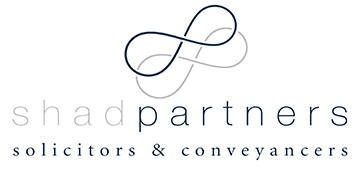Since 2007, self-managed super funds (SMSF) have been permitted to borrow money to invest in all types of real property including residential property, commercial property and industrial property.
Prior to 2007, SMSFs could purchase property but were not permitted to borrow money to buy a property that the fund could otherwise not afford.
There are many advantages to owning property in a SMSF, including having direct control of super investments, paying reduced or no income tax on rental income and a lower capital gains tax rate being applied on the disposal of the property.
However, there are a number of strict rules and regulations which must be complied with and complex borrowing arrangements.
In this article we look at some of the common mistakes made by individuals in setting up their own SMSFs and offer tips for avoiding the pitfalls of borrowing to purchase real estate through a SMSF.
SMSF borrowing structures
There are special rules that apply where a SMSF borrows money to purchase property.
A SMSF can only borrow to purchase an investment property through a limited recourse borrowing arrangement (LRBA). In a LRBA, the lender holds the purchased property as security, however any existing or other assets held by the SMSF cannot be used for additional security. Nonetheless, lenders can still require an individual to provide a personal guarantee.
When a SMSF borrows money, it is required to establish what is known as a bare trust. This is a special purpose trust which holds the property being purchased on trust for the SMSF.
The bare trust is the registered holder of the property until the loan is repaid. When the loan is repaid the legal ownership of the investment property reverts to the trustee of the SMSF.
The purpose of requiring a bare trust and borrowing through a LRBA is to protect the assets of the SMSF and to ensure that members do not lose their entire retirement fund if the property investment turns sour.
SMSF borrowings are regulated by the Superannuation Industry (Supervision) Act 1993 (SIS Act). The Australian Taxation Office administers the relevant legislation and assists SMSF trustees to comply with their obligations.
What property investments are allowed?
A SMSF can have investments in commercial property and residential property provided the property purchased meets the “sole purpose” test – of supporting the SMSFs investment strategy in building wealth for retirement.
Some examples of property investments which are not permitted because they don’t meet the “sole purpose” test include the following:
- A property which is purchased for the purpose of redevelopment breaches the sole purpose test as it may be interpreted as the fund carrying on a property development business.
- Owning a holiday home which is intended to be used for private purposes (even one weekend a year) breaches the sole purpose test.
- A SMSF cannot buy a residential property for members to live in, or for any family member to live in.
A SMSF is generally not allowed to purchase residential assets from a member or an associate of a member.
A SMSF can purchase commercial, retail or industrial property at market value from a trustee or member of a fund and that property can be commercially leased to a business related to a trustee or member or related party, as long as the transaction is on a commercial arm’s length basis.
Some of the risks of a SMSF buying a property
As noted above, there are strict rules and requirements governing the establishment and running of a SMSF. If the rules and requirements are not met, the fund is at risk of being deemed non-compliant, which can result in significant penalties and additional taxes.
Some of the more common reasons why a fund might be deemed non-compliant include the following:
- Making errors on the property acquisition documentation (for e.g. the title deed containing an incorrect owner), which can lead to capital gains tax assessments and double stamp duty being payable later in the life of the fund.
- Purchasing a property directly into a SMSF without a bare trustee arrangement having been set up.
- Making payments for the purchase of the property from a bank account other than that of the SMSF.
- Using the property for personal use.
There is also the risk that the value of the property may decrease. Furthermore, a fund may not be able to find a tenant for the property, which can put pressure on the cash flow of a SMSF. Similarly, a super fund may not be able to meet the repayments of the loan because of interest rate increases or rent decreases.
Conclusion
Buying a property through a SMSF can be a valuable investment strategy. However, the decision to set up a SMSF and purchase a property in the SMSF carries some financial risk and must form part of the overall investment strategy of the SMSF.
This information is for general purposes, and you should obtain professional advice relevant to your circumstances.
A decision should not be made as to whether buying a property through a SMSF is the best option for you without first obtaining financial and legal advice.
If you would like to meet with one of our lawyers to discuss purchasing property via an SMSF please contact us on 02 9790 7000 or email [email protected].
